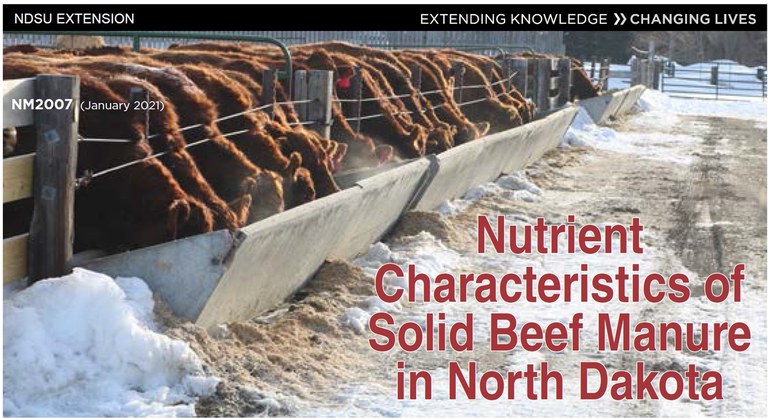Spreading Manure Across the Frozen Plains
A question usually come up every year around late February or early March, especially if it’s an “in like a lamb” situation like we’re having this year. It usually comes as people are getting antsy indoors and start to venture out on little trips across the state. The question is something along the lines of, “Can/should people be spreading manure right now?”
The short answer: yes-ish.
The long answer is…In North Dakota, manure can be applied to frozen ground where runoff is contained and does not drain off during spring runoff. Land with less than 6% slope, with stubble or vegetative cover and less than 8 inches of snow should be considered.
Solid beef manure contains the primary macronutrients nitrogen, phosphorus and potassium, as well as secondary macronutrients and several micronutrients. Manure nutrient content can be impacted by several variables, such as North Dakota’s dynamic climate and available feedstuffs for cattle (Lardy et al., 2015). Animal diet and maturity also can impact the nutrient content of manure. As an animal grows to maturity, protein requirements decrease and carbohydrate forms change, thereby decreasing the concentration of these nutrients excreted as a percent of body weight. Similarly, increased levels of minerals fed to livestock (e.g. copper, phosphorus, sodium) increase the levels of those nutrients in the manure (Midwest Plan Service, 2004).
A project was created to test and identify what nutrients are specifically available in North Dakota’s beef manure. From 2011 to 2013, 192 solid beef manure samples were collected across North Dakota and analyzed for nutrient content. You will find the results of that study in the brand new publication titled “Nutrient Characteristics of Solid Beef Manure in North Dakota.”
While averages are convenient to have for planning purposes, actual values can vary widely. Therefore, analyzing your livestock manure for nutrient content is the best way to know the actual values to help make application as accurate as possible. To answer all of your manure sampling questions, the “Solid Manure Sampling for Nutrient Management Planning” publication has been updated to include simple steps as well as sections on how to read and use the manure analyses results. Manure testing should be paired with a soil test. Your NDSU Extension agent can help you find a laboratory that can analyze your manure and soil samples.
If you don’t have the equipment to spread manure you can always contact a North Dakota Custom Manure Hauler.
Mary Keena
Mary.Keena@ndsu.edu
Extension Livestock Environmental Management Specialist



